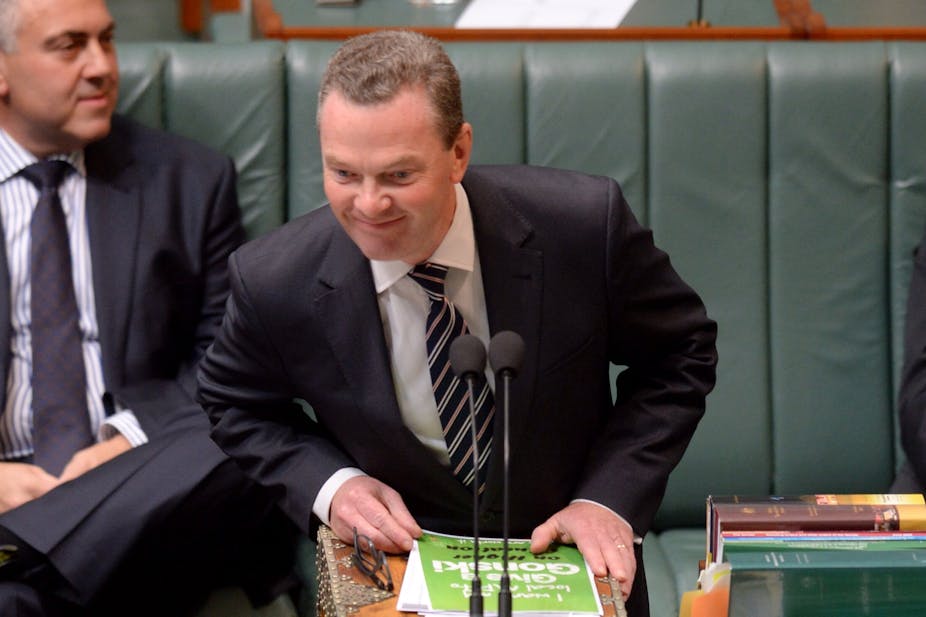The rise and rise of Australian universities in the THE World University Rankings is indeed a good news story. Eight Australian institutions ranked in the top 200, and five in the top 100; that’s quite an amazing achievement for a country of our size.
The Times Higher Education (THE) rankings, drawn from a composite of indicators across teaching, research, internationalisation and engagement, follow on from Australia’s solid performance in the more prestigious GRWU rankings of research-focused universities, in which Australia placed four institutions in the top 100.
Are we really doomed to drop in the rankings if the Senate says no to fee deregulation?
Education Minister Christopher Pyne said last week that Australian universities will “slide into mediocrity” in the rankings if his proposed deregulation of university fees doesn’t get through the Senate. You can read this link to the ABC’s Fact Check for a sensible analysis of the claim.
No, continued regulation of university fees will not mean rankings death for Australian universities. Continued underinvestment, however, will. At present, Australia has the second-lowest public investment in higher education as a share of GDP in the OECD. How do we do so well in the rankings? In part, because our high levels of private investment (HECS, fees) bring us up to the OECD average of 1.4% of GDP.
Commonwealth investment in universities at levels closer to the top of the OECD would guarantee continued rises in our already strong higher education sector. Indeed, it is the overall performance of Australian universities as a broad sector, rather than a focus on a couple high performers, that is Australia’s strength, as the editor of the Times Higher Education World University Rankings, Phil Baty, has observed. Deregulation will further stratify the higher education market in Australia, which would undermine our strong sector-wide performance.
If we really want a world-class university sector, the rankings we need to be topping are the OECD league tables for public investment in higher education and research as a proportion of GDP.
Yet there has been no appetite for this kind of investment from governments of either persuasion for the last 25 years. Universities have become pretty pragmatic over this period of belt tightening, and that’s why they generally support deregulation. It’s student money or no money.
What really drives performance in the rankings?
Australia’s performance in the rankings is largely due to the quality and impact of Australian research. The GRWU (the rankings you really want to win) are entirely research-focused. The THE World University Rankings are at least research-heavy.
Deregulation of undergraduate fees will have a negligible effect on research performance, unless universities use any extra revenue from increased fees to fund research. To do so on a large enough scale to affect rankings would be close to suicidal.
Alongside the proposed deregulation of fees is a 20% cut to Commonwealth funding for teaching and learning, so universities are going to need to raise fees by at least an average of 20% just to maintain the status quo. Increasing undergraduate fees to bolster research in a meaningful way is simply not an option.
There are indications that Minister Pyne has threatened to cut billions of dollars from funding for university competitive research grants should the Senate block deregulation. Cutting research grant funding would certainly guarantee a “slide into mediocrity”.
What do the rankings mean, anyway?
For individual universities playing in the top 100, year-to-year shifts in the rankings mean relatively little in real terms. The front-runners are so tightly bunched together that very small shifts in performance against the indicators being measured can push universities this way and that.
It’s a bit like a group of Olympic runners – once someone’s in the top group of performers in the world, mere tenths of a second can mean the difference between winning a medal or not, or between making the final or not, in a single competition. What is beyond doubt is that these guys are all really, really fast.
Similarly, if a university slips up or down ten points in the top 100, it can mean a miniscule shift in actual performance, but little to nothing to cause doubt that this is a top-notch uni. (For marketing departments and vice-chancellors, however, a slip or a victory is of course a very big deal.)
For universities playing in mid-level, things are perhaps more meaningfully serious than they are up the top. Moving an also-ran into the main game is no easy task, and rightfully puts an institution on the map.
The question is, what map? Does not making the top 500 mean there’s something wrong? Teaching and learning are notoriously hard to quantify. Students would do well to ignore rankings if they’re looking to find the right place for their own, individual needs.
Yet the harsh truth is that performance in the rankings is where the university status game is played out. Students know this, academics know it, and government certainly does too.
If Australia is to continue, or improve upon, its strong performance in international rankings, increasing undergraduate fees will not be enough. Placing second last in public investment in tertiary education across the OECD should make the best move forward obvious.

